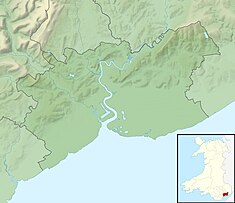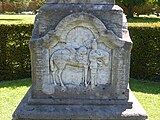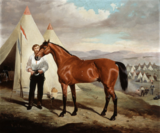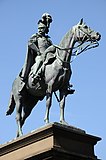
The Battle of Inkerman was fought during the Crimean War on 5 November 1854 between the allied armies of Britain and France against the Imperial Russian Army. The battle broke the will of the Russian Army to defeat the allies in the field, and was followed by the Siege of Sevastopol. The role of troops fighting mostly on their own initiative due to the foggy conditions during the battle has earned the engagement the name "The Soldier's Battle."

Field Marshal FitzRoy James Henry Somerset, 1st Baron Raglan,, known before 1852 as Lord FitzRoy Somerset, was a British Army officer. When a junior officer, he served in the Peninsular War and the Waterloo campaign, latterly as military secretary to the Duke of Wellington. He also took part in politics as Tory Member of Parliament for Truro, before becoming Master-General of the Ordnance.

The Battle of Balaclava, fought on 25 October 1854 during the Crimean War, was part of the Siege of Sevastopol (1854–55), an Allied attempt to capture the port and fortress of Sevastopol, Russia's principal naval base on the Black Sea. The engagement followed the earlier Allied victory in September at the Battle of the Alma, where the Russian General Menshikov had positioned his army in an attempt to stop the Allies progressing south towards their strategic goal. Alma was the first major encounter fought in the Crimean Peninsula since the Allied landings at Kalamita Bay on 14 September, and was a clear battlefield success; but a tardy pursuit by the Allies failed to gain a decisive victory, allowing the Russians to regroup, recover and prepare their defence.
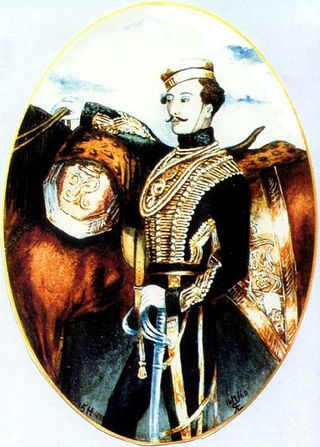
Lewis Edward Nolan, known to his family as Louis Nolan and in Austrian service as Ludwig Nolan was a British Army officer and cavalry tactician best known for his role and death in the Charge of the Light Brigade during the Crimean War. Born to a infantry officer and minor official and his wife, Nolan was educated at the Austrian Inhaber Pioneer School at Tulln, where he was noted as an enthusiastic horseman and military theorist. After early graduation he was commissioned as a subaltern in the 10th Austrian Hussar regiment, serving in Austria, Hungary and on the Polish frontier, where he again became known for his horsemanship and was promoted to senior lieutenant. Due to the nepotism in the Austro-Hungarian armed forces, Nolan transferred to the British Army as a cornet in the 15th Light Dragoons.
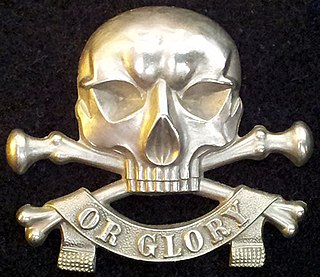
The 17th Lancers (Duke of Cambridge's Own) was a cavalry regiment of the British Army, raised in 1759 and notable for its participation in the Charge of the Light Brigade during the Crimean War. The regiment was amalgamated with the 21st Lancers to form the 17th/21st Lancers in 1922.

Charles Wooden VC was a German-born soldier in the British Army and a recipient of the Victoria Cross, the highest award for gallantry in the face of the enemy that can be awarded to British and Commonwealth forces.

Tredegar House is a 17th-century Charles II-era mansion in Coedkernew, on the southwestern edge of Newport, Wales. For over five hundred years it was home to the Morgan family, later Lords Tredegar, one of the most powerful and influential families in the area. Described as "the grandest and most exuberant country house in Monmouthshire" and one of the "outstanding houses of the Restoration period in the whole of Britain", the mansion stands in a reduced landscaped garden of 90 acres (0.36 km2). The property became a Grade I listed building on 3 March 1952 and has been under the care of the National Trust since March 2012. The park surrounding the house is designated Grade II* on the Cadw/ICOMOS Register of Parks and Gardens of Special Historic Interest in Wales.

The 13th Hussars was a cavalry regiment of the British Army established in 1715. It saw service for three centuries including the Napoleonic Wars, the Crimean War and the First World War but then amalgamated with the 18th Royal Hussars, to form the 13th/18th Royal Hussars in 1922.

The Charge of the Light Brigade is a 1936 American historical adventure film from Warner Bros., starring Errol Flynn and Olivia de Havilland. It was directed by Michael Curtiz and produced by Samuel Bischoff, with Hal B. Wallis as the executive producer. The film's screenplay is by Michael Jacoby and Rowland Leigh, from a story by Michael Jacoby, and based on the 1854 poem "The Charge of the Light Brigade" by Alfred, Lord Tennyson. The music score was composed by Max Steiner, his first for Warner Bros., and the cinematography was by Sol Polito. Scenes were shot at the following California locations: Lone Pine, Sherwood Lake, Lasky Mesa, Chatsworth, and Sonora. The Sierra Nevada mountains were used for the Khyber Pass scenes.

Baron Tredegar, of Tredegar in the County of Monmouth, was a title in the Peerage of the United Kingdom. It was created on 16 April 1859 for the Welsh politician Sir Charles Morgan, 3rd Baronet, who had earlier represented Brecon in Parliament. His eldest son, Charles Rodney Morgan, sat as Member of Parliament for Brecon, but predeceased his father. Lord Tredegar was therefore succeeded by his second son, the second Baron.

Ruperra Castle or Rhiwperra Castle is a Grade II* Listed building and Scheduled Ancient Monument, situated in Lower Machen in the county borough of Caerphilly, Wales. Built in 1626, the castle is in a ruinous condition as at 2023. Its grounds are listed on the Cadw/ICOMOS Register of Parks and Gardens of Special Historic Interest in Wales.

Edwin Hughes, nicknamed "Balaclava Ned", was a British Army soldier and the last survivor of the famous Charge of the Light Brigade during the Crimean War of 1854–56.

Godfrey Charles Morgan, 1st Viscount Tredegar was a Welsh officer, a General in the British Army, and a peer in the House of Lords.

Colonel Hon. Frederick Courtenay Morgan was a Welsh Army officer and Conservative politician.

The Charge of the Light Brigade was a military action undertaken by British light cavalry against Russian forces during the Battle of Balaclava in the Crimean War, resulting in many casualties to the cavalry. On 25 October 1854, the Light Brigade, led by Lord Cardigan, mounted a frontal assault against a Russian artillery battery which was well prepared with excellent fields of defensive fire. The charge was the result of a misunderstood order from the commander in chief, Lord Raglan, who had intended the Light Brigade to attack a different objective for which light cavalry was better suited, to prevent the Russians from removing captured guns from overrun Turkish positions. The Light Brigade made its charge under withering direct fire and reached its target, scattering some of the gunners, but was forced to retreat immediately.

Charles Morgan Robinson Morgan, 1st Baron Tredegar, known as Sir Charles Morgan Robinson Morgan, 3rd Baronet from 1846 to 1859, was a Welsh Whig peer and a member of the House of Lords.
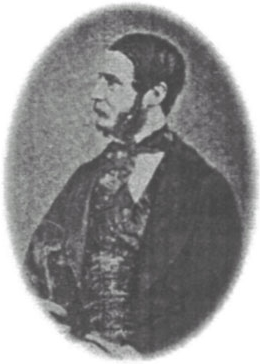
Lieutenant-Colonel William Morris was a British Army officer who rode in the Charge of the Light Brigade.

St Basil's Church stands in the village of Bassaleg, to the west of the city of Newport, Wales. An active parish church, it is a Grade II* listed building.

Frederic Charles John Morgan, 6th Baron Tredegar, was a Welsh peer and landowner. On 21 August 1954, he succeeded to the titles of 6th Baron Tredegar and 8th baronet following the death of his father, Frederic George Morgan, 5th Baron Tredegar. His own death in 1962 saw the extinction of the Tredegar barony and the Morgan baronetcy and his previous liquidation of the entirety of his family's Welsh estates brought to an end a social and political dynasty that had dominated South East Wales for 500 years.
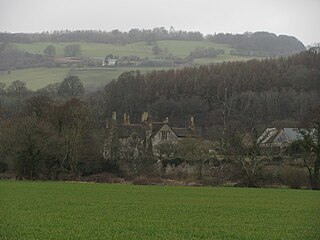
Plas Machen is a country house in the hamlet of Lower Machen, to the west of the city of Newport, Wales. The house was the ancestral home of the Morgan family of South Wales prior to their construction of Tredegar House. It is a Grade II* listed building. The gardens are listed at Grade II on the Cadw/ICOMOS Register of Parks and Gardens of Special Historic Interest in Wales. A pair of cottages in the grounds of the house are also listed at Grade II. The house remains a private residence and is not open to the public.

